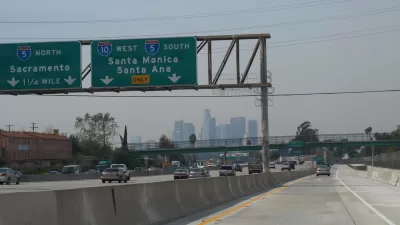The solution to so-called "automobile dependence" within the contemporary planning community is almost alway more mass transit: more trains and buses. But is this realistic, particualarly given current strategies and approaches to providing mass transit? Most investments in mass transit are patently unsustainable, requiring huge investments in capital and dramatic reductions in mobility (measured by travel time) to achieve ridership goals. Proof of mass transit's unsustainability is obvious to anyone willing to look at it objectively:
The solution to so-called "automobile dependence" within the contemporary planning community is almost alway more mass transit: more trains and buses. But is this realistic, particualarly given current strategies and approaches to providing mass transit? Most investments in mass transit are patently unsustainable, requiring huge investments in capital and dramatic reductions in mobility (measured by travel time) to achieve ridership goals.
Proof of mass transit's unsustainability is obvious to anyone willing to look at it objectively:
- Mass transit's share of travel continues to fall, even as it seems to have stemmed a decades -ong decline in the absolute number of miles traveled;
- Increasing market share and transit riders requires dramatically reducing mobility by either increasing congestion or ratcheting up personal autombile costs artificially through devices such as registration fees or gas taxes;
- While automobile use is subsidized, transit is subsidized at even higher levels, with users paying substantially less than half operating costs. Many communities offer some transit services for free, or a near free fares, to entice people onto trolleys, buses, and trains;
- Even in places where TODs are considered "successful", such as Ballston or the Chicago Loop, most trips are still by autombile unless people live (or work) in uniquely highe density places such as Manhattan.
In short, providing transit using the current paradigms and strategies is unsustainble. Transit's success depends on the ability of planners to make the lives of travelers worse off by making it harder to get around, restricting housing choice and type, and subjecting people to all manner of externalities and lifestyles they routinely choose to avoid in the current housing market place (e.g., small homes, urban noise, and air pollution).
Is there a future for mass transit? I think so, but it will take outside the box thinking on the part of transit managers and policymakers. Transit lost its way more than four decades ago when it largely ignored the needs and desires of a wealthier and more mobile middle class. The key is to recapture that market by expanding niche services that compete on the things that matter most to the broad base of travelers--fast, reliable, dependable service.
These are going to be niche services rather than the dense, comprehensive transit networks that characterized early 20th century systems. Some transit agencies have begun to shift in this diretion, opting for faster, more flexible and more niche focused transit services such as bus rapid transit. The Central Ohio Transit Authority is pursuing this strategy. Houston has found that high volume bus service can benefit from highway capacity improvements, experiencing gains in market share along some routes. Even Los Angeles is implementing a bus rapid transit route that has the potential to compete based on time and reliability, providing a meaningful alternative to automobile travel.
The key to transit success in the 21st century is improving mobility in a tangible competitive way. In most urban areas, creating a sustainable transit system will mean rebuilding transit networks and markets from the ground up.

Study: Maui’s Plan to Convert Vacation Rentals to Long-Term Housing Could Cause Nearly $1 Billion Economic Loss
The plan would reduce visitor accommodation by 25,% resulting in 1,900 jobs lost.

North Texas Transit Leaders Tout Benefits of TOD for Growing Region
At a summit focused on transit-oriented development, policymakers discussed how North Texas’ expanded light rail system can serve as a tool for economic growth.

Using Old Oil and Gas Wells for Green Energy Storage
Penn State researchers have found that repurposing abandoned oil and gas wells for geothermal-assisted compressed-air energy storage can boost efficiency, reduce environmental risks, and support clean energy and job transitions.

Santa Barbara Could Build Housing on County Land
County supervisors moved forward a proposal to build workforce housing on two county-owned parcels.

San Mateo Formally Opposes Freeway Project
The city council will send a letter to Caltrans urging the agency to reconsider a plan to expand the 101 through the city of San Mateo.

A Bronx Community Fights to Have its Voice Heard
After organizing and giving input for decades, the community around the Kingsbridge Armory might actually see it redeveloped — and they want to continue to have a say in how it goes.
Urban Design for Planners 1: Software Tools
This six-course series explores essential urban design concepts using open source software and equips planners with the tools they need to participate fully in the urban design process.
Planning for Universal Design
Learn the tools for implementing Universal Design in planning regulations.
Ascent Environmental
Borough of Carlisle
Institute for Housing and Urban Development Studies (IHS)
City of Grandview
Harvard GSD Executive Education
Toledo-Lucas County Plan Commissions
Salt Lake City
NYU Wagner Graduate School of Public Service






























